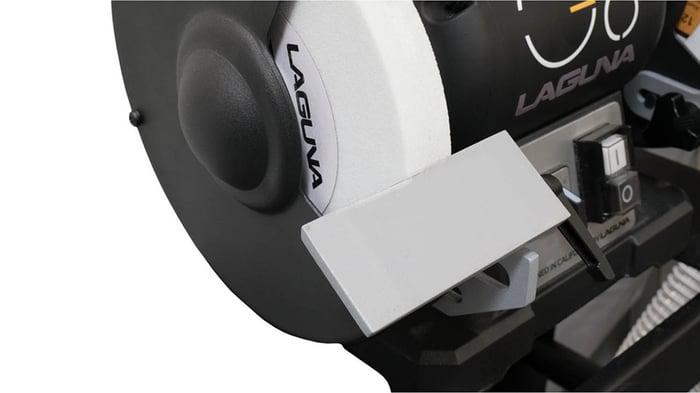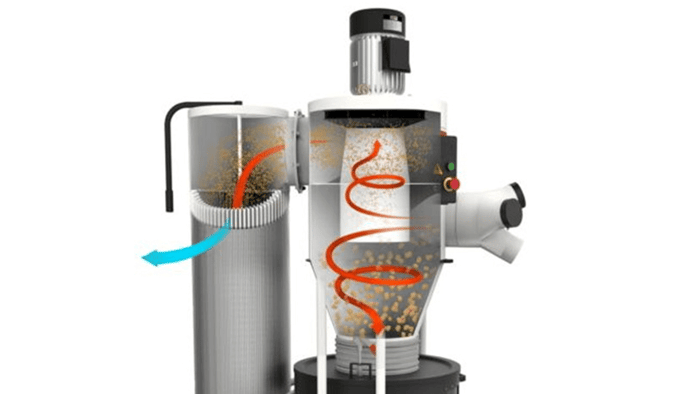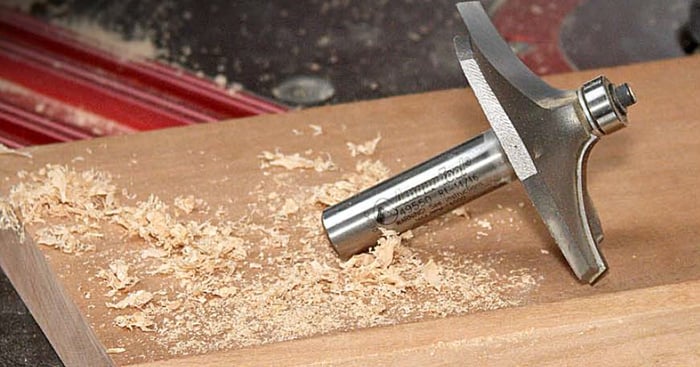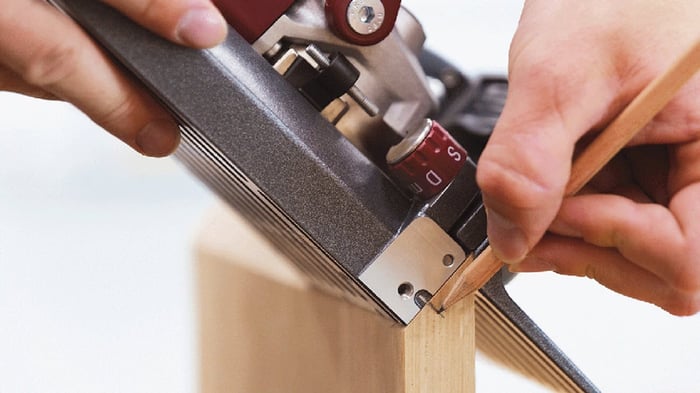
A Joinery Machine is NOT a Jointer
The terms joinery machine and jointer are often confused, but they refer to different categories of woodworking equipment with distinct functions.
Jointer vs. Joinery Machine: The Key Differences
 JET 6" Benchtop Jointer features a fully adjustable large cast iron fence, internal dust collection system, and safety block & push stick
JET 6" Benchtop Jointer features a fully adjustable large cast iron fence, internal dust collection system, and safety block & push stickWhat is a Jointer?
A jointer (sometimes called a surface planer) is a specialized woodworking machine designed to create a flat face on a board and a straight, square edge that is exactly 90 degrees to that face. It’s mainly used to flatten warped lumber and prepare stock for further processing. A jointer does not make boards uniform in thickness — that’s the job of a planer.
How a Jointer Works
A jointer has an infeed and an outfeed table with a rotating cutter head between them. The infeed table sits slightly lower than the cutter head, setting the cutting depth. As you push a board over the spinning cutter head, the blades shave off high spots, leaving a smooth, flat surface. A fence keeps the board square when edge jointing. Multiple light passes ensure accuracy and prevent tear-out.
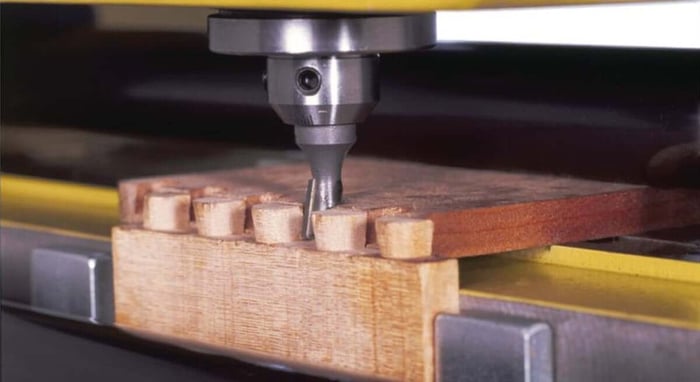 Powermatic dovetail machine is made from cast iron and steel to cut dovetails all day, every day
Powermatic dovetail machine is made from cast iron and steel to cut dovetails all day, every dayWhat is a Joinery Machine?
A joinery machine is a broader term covering any woodworking machine designed to cut joints that connect pieces of wood. Unlike a jointer, which prepares wood for joinery, a joinery machine actually makes the interlocking shapes — like mortises, tenons, biscuits, dovetails — that hold wood pieces together securely.
How Joinery Machines Work (with Examples)
 Lamello Classic X (pictured at the top of this page) is the original biscuit joiner, creating strong joints in cabinets, shelves, and furniture. Cordless version also available.
Lamello Classic X (pictured at the top of this page) is the original biscuit joiner, creating strong joints in cabinets, shelves, and furniture. Cordless version also available.
 Lamello Classic X (pictured at the top of this page) is the original biscuit joiner, creating strong joints in cabinets, shelves, and furniture. Cordless version also available.
Lamello Classic X (pictured at the top of this page) is the original biscuit joiner, creating strong joints in cabinets, shelves, and furniture. Cordless version also available.Biscuit Joiner (Plate Joiner)
How it works: Uses a small spinning blade to cut matching slots in two pieces of wood. A thin wooden “biscuit” is glued in place and swells slightly, creating a tight joint.
Common use: Aligning panels and reinforcing simple butt joints in cabinets and furniture.
Domino Joiner
How it works: Cuts precise mortises for loose tenons (“dominos”) using an oscillating cutter. The tenons fit snugly and are glued for strong, accurate joints.
Common use: High-strength joints for furniture frames, doors, and panels.
Mortiser
How it works: Cuts square or rectangular mortises. Variants include hollow chisel mortisers (bit inside a square chisel) and chain mortisers (chainsaw-like cutter for deep mortises).
Common use: Traditional mortise and tenon joints in furniture and timber framing.
Dovetail Machine / Dovetail Jig
How it works: A jig paired with a router (or an automated machine) cuts interlocking dovetails quickly and accurately.
Common use: Drawer construction and decorative box joints in fine woodworking.
CNC Router
How it works: A computer-controlled router cuts joints with high precision based on a digital design.
Common use: Complex custom joinery, repeatable production, or mass production of identical parts.
How to Choose the Right Joinery Machine
- Your Projects: Consider the joint types you need and how often you’ll use the machine.
- Accuracy: Look for machines with solid fences, precise depth controls, and repeatable settings.
- Build Quality: Heavier, well-built machines reduce vibration and last longer.
- Ease of Use & Safety: Check for easy adjustments, good dust collection, and robust safety features.
- Capacity: Make sure it handles your usual wood sizes and thicknesses.
- Support & Warranty: Choose reputable brands with good customer service and available parts.
- Budget: Balance your budget with your quality needs — buying too cheap can cost more in frustration later.
By matching the machine to your joinery needs and workflow, you’ll get clean, strong joints and enjoy woodworking more.
FAQs
What is the main difference between a jointer and a joinery machine?
A jointer flattens and squares wood surfaces but does not create joints. A joinery machine cuts the interlocking shapes that hold wood pieces together.
Do I need both a jointer and a joinery machine?
Yes — many woodworkers use both. The jointer preps rough lumber so that joinery machines can cut precise joints on flat, square stock.
Can a planer replace a jointer?
No. A planer makes boards uniformly thick but doesn’t flatten a warped face or straighten an edge like a jointer does.
Are biscuit joiners strong enough for furniture?
For light to medium-duty joints, yes. For heavy-duty furniture joints, domino joiners or traditional mortise and tenon joints provide greater strength.
What joinery machine should beginners start with?
A biscuit joiner or pocket hole jig is great for simple projects. As you gain experience, consider a domino joiner, mortiser, or CNC router for more advanced work.



